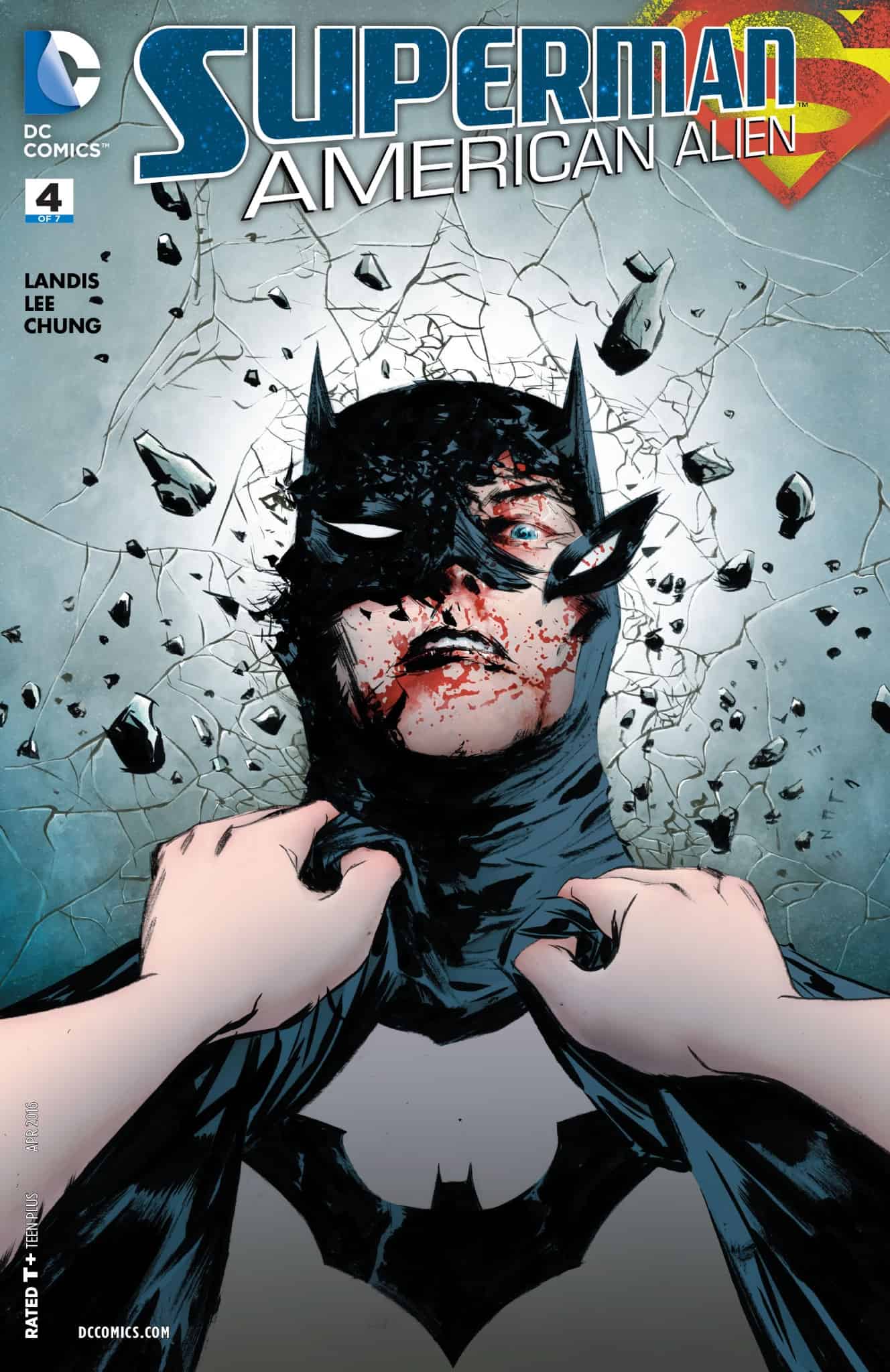
Written by Max Landis
Art by Jae Lee
Colors by June Chung
Letters by John Workman
Published by DC Comics
It’s a modern-day myth that’s been told time and again: the first meeting of the World’s Finest. If Byrne is to be believed, the Man of Steel and the Dark Knight formed and uneasy alliance which grew to begrudging respect while teaming up against the z-list villainess Magpie. The story according to Straczynski is that the two took on an invading army in protection of Nanda Parbat. As Johns tells it, the Caped Crusader attacked the Metropolis Marvel on the eve of Darkseid’s invasion, leading directly to the formation of the Justice League. Snyder sings of Clark and Bruce being brought together by none other than Lex Luthor himself (at least according to the trailers).
Landis offers his own take on this monumentous moment in Superman: American Alien #4, contextualizing the confrontation as the capstone to Clark’s arrival in the Big Apricot and his fateful first encounters with a number of its most prominent denizens. Here too is Louis Lane, or rather Lois Lane, much to Clark’s (pleasant) surprise. As also is Lex Luthor, who’s politicized, perhaps appropriately, as a Randian Objectivist – hardly a great divergence from his usual portray as a Nietzschian nihilist. And of course, Oliver Queen, returning to the miniseries from last issue a changed man following his ordeal on Starfish Island.
The best cameo, however, is that of billionaire Bruce Wayne’s young ward, Dick Grayson, who rhapsodizes with Clark regarding the problem of the rumored Batman. In the most impactful exchange in the series to date (both in terms of its importance to the narrative and its emotional resonance with the reader), the future Boy Wonder says:
“It’s about balance… Batman needs a counterpoint… Darkness needs light. Fear needs hope.”
It’s clear that Grayson is contemplating putting on the pixie boots and becoming Bruce’s sidekick, but by issue’s end Clark’s taken those words to heart; even as Lois is encouraging him to embrace employment as a reporter, Clark is considering also the vocation of vigilante – albeit one who inspires as much hope as Batman strikes fear.
The sublimity of Landis’ script is that such interconnectivedness never comes across as contrivances. Every familiar face that interacts with Clark progresses the plot while keeping true to their character.
For the first time in the course of this book, Landis’ writing is nearly equalled by his artistic collaborator. This is not Jae Lee’s first time drawing Superman’s supporting cast – it’s not even Lee’s first time illustrating the initial meeting of Clark and Bruce – but it’s by far his most impressive work since Ozymandias. His skylines are strikingly surreal. The body language of every character is a word balloon in itself, saying all that needs to be said about each. And best of all, brief though it is, the actual fight between Clark and Bruce is beautifully brutal.
Early on in the issue, a throwaway line indicates that the train Clark’s riding on is approaching Morrison Boulevard and Quitely Street – a clear call-out to the creative team behind All-Star Superman, widely regarded as the greatest story ever told about the greatest hero the world’s ever known. A sympathetic reading of Landis’ intentions would regard the reference as an homage honoring the two titans of the medium. But another reading would claim Landis is drawing comparison between All-Star and American Alien with respect to their artistic quality. It is impossible to discern for sure what Landis’ purpose in doing so was. But after reading the series thus far, and based on this fourth issue in particular, this much is certain: American Alien is sure to be mentioned in the same breath as All-Star for decades to come, and the comparison will be favorable indeed.


